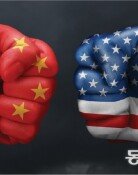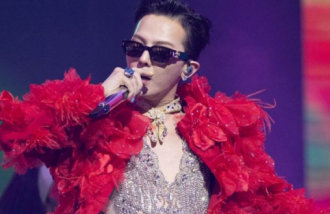For Liquor Industry, the Time Is Now
For Liquor Industry, the Time Is Now
Posted November. 26, 2005 07:19,
With the most important retail season of the year underway, the health of the liquor industry is hanging in the balance. If liquor companies do well this season, they will reap considerable profits. On the other hand, they could face going broke if they dont do well.
The months of December and January mark the highest season in a year for the industry, as many people have social gatherings during these months. For whisky companies, in particular, sales during these two months represent a quarter of the amount of sales over the remaining 10 months.
Whisky companies, which have been suffering since last year from the impact of last years legislation of the real name reception expense law and the anti-prostitution law, are banking their survival on their sale performances of the end of the year and the New Year.
Seize the 250 Billion Won Market-
The annual size of the domestic whisky market stands at 1.1 to 1.2 trillion won (factory prices). About 250 billion won of the amount is based on sales made in December and January.
Regarding monthly whisky sales over the last four years, sales figures are highest in January with 316,450 boxes (a 9-liter box contains 18 bottles of 500ml whisky), followed by that of December (307,799 boxes). It is only these two months of the year that posted monthly average sales number exceeding 300,000 boxes.
Produced whisky is delivered to three types of stores: entertainment establishments, supermarkets and discount stores, according to a target consumer group. More than 80 percent of sales in December and January comes from entertainment establishments.
An official at Jinro Ballantines explained, December and January are filled with gatherings celebrating the years end and the new years beginning. In such gatherings, people drink in multiple rounds, which leads to greater consumption of whisky.
Promoting Upscale Products-
The aging period of crude liquid determines the level of whisky: standard (six years), premium (12 years) and super premium (17 years or more).
Premium whisky is dominant in the domestic market with 74.6 percent of the market share. However, the proportion of super premium whisky grew to 23.7 percent (as of October of this year) from 3.3 percent in 2000.
For this reason, Jinro Ballantines and Diageo Korea recently rolled out their respective 21-year products. Jinro Ballantines and Diageo Korea are leading the 12-year-old and 17-year-old whisky markets, respectively, with their Imperial and Winsor products.
They are competing with one another to introduce super premium products to increase sales by attracting consumers in high income brackets and to check Scotch Blue, the leader of the 21-year-old whisky market.
Focusing on Promotion-
Whisky companies are also engaged in enthusiastic promotion efforts.
Jinro Ballantines recently held a Ballantine Master Class in which it explained the secrets of producing whisky. The company is also holding a Find the golden ball event through the end of the year, in which a person who finds a golden ball inside Imperials keeper cap designed to prevent tempering with the liquor would receive solid gold.
Diageo Korea is strengthening consumer promotion by establishing a Three-color brand strategy with focus on Winsor, Dimple and Johnnie Walker.
Lee Hee-yong, vice-president of the sales team which is making tours to provincial areas to beef up sales activities, said, To boost sales, we are paying attention to difficulties of wholesalers and owners of entertainment establishments and planning to greatly increase print media advertising, including newspapers and magazines.
In addition, starting on December 1, Hite Brewery will hold an event in which it delivers generous gifts to celebrate its acquisition of Jinro. The company expects to reap benefits along with the whisky industry in December and January.
Sang-Soo Kim ssoo@donga.com






![[횡설수설/신광영]용산 대통령실 사우나와 비밀통로](https://dimg.donga.com/c/138/175/90/1/wps/NEWS/IMAGE/2026/01/04/133090799.1.jpg)
